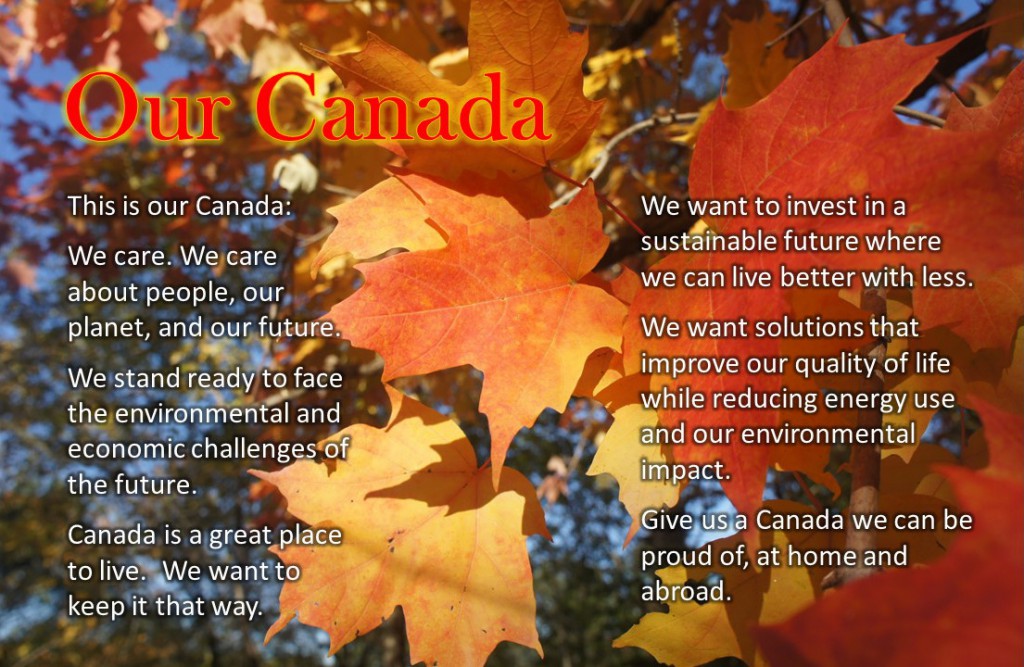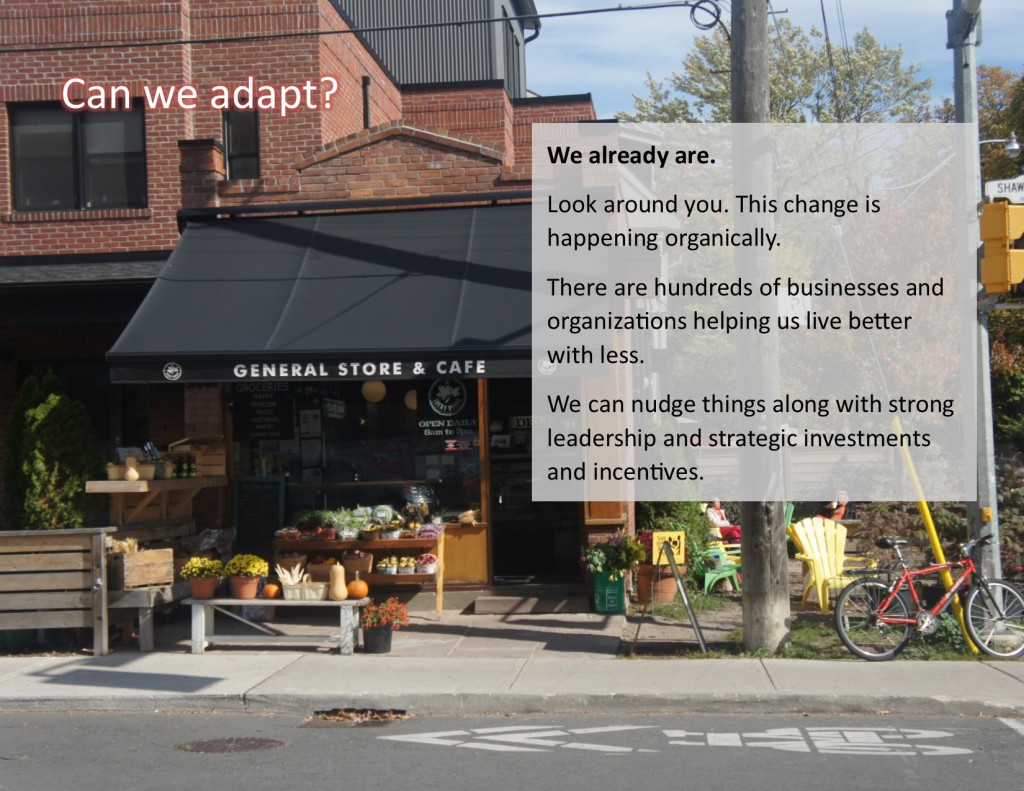In spite of the complexity of all the issues and challenges facing us as a nation, it really all comes down to a single common vision — we all want Canada to be a great place to live. We want good health, a good home in a good community, meaningful work in a strong economy, and opportunities for personal growth.
This may sound strange as a vision statement for a national initiative on conservation, but it isn’t. Conservation is a means to an end. Tell us your vision, and we can look for solutions that won’t destroy our future.
Live better with less.

Our vision draws on the United Nations Sustainability Goals, seventeen goals for health, education, well-being, equity, economic development, and a healthy environment. There is an amazing global movement for sustainability, and Canada is well-placed to lead the way by a transition to a better future is possible.
But in the end, the vision is about creating the future we want – Canada as a great place to live. And then all the pieces begin to fall into place. It’s not about funding transit, creating bike lanes, or installing renewable power because it solves climate change – we are doing it because it saves money, improves our quality of life, and builds better communities. And it just happens that the future we want will also strengthen our economy and reduce our environmental impact.
From Vision to Action
 The transition is already happening. We just need to find ways to make it happen faster.
The transition is already happening. We just need to find ways to make it happen faster.
Here’s where we delve into social change theory.
The chart at right comes from our report “Achieving the Future Canadians Want“. It shows how we positive solutions will build strong cultural support for leadership that will in turn support further action – a positive feedback loop that will allow us to achieve major results.
A complex theory of change boils down to three key elements :
- Collaboration and leadership
Translate public desire for solutions into a mandate for action. - Big ideas as a catalyst for change
Identify major initiatives that will empower widespread change. - Community Action
Build on-the-ground capacity for organic, voluntary change.
See our Solutions page to see how we can put the theory into action!
